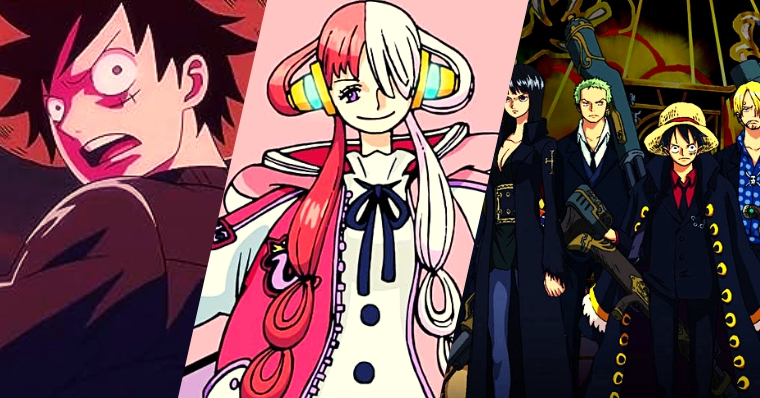With over a thousand episodes and counting, not to mention its manga chapters, One Piece doesn't stop there. It spills its treasure of stories into various platforms - from captivating video games to other dynamic media. Like many successful shounen stories, Eiichiro Oda's magnum opus has seen its fair share of cinematic treatments over the years. Some of these films have been acclaimed crowd-pleasers, while others... let's just say they didn't sail the same seas. Without further ado, here's your guide to the top 10 One Piece films you absolutely must watch!
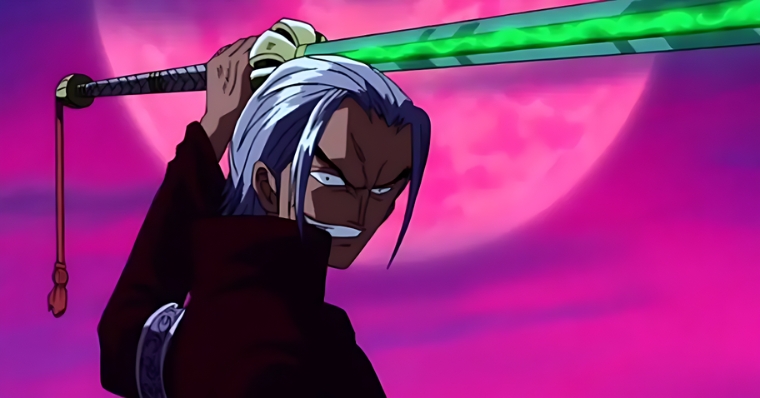
One Piece: The Cursed Holy Sword (2004)
The whirlwind world of "One Piece," where pirates rule the seas and treasures, epitomizes life goals. Now, cast your anchor for a bit because we're setting sail with "One Piece: The Cursed Holy Sword." Our beloved Straw Hat Pirates embark on an escapade to Asuka Island. There, they learn about the Shichiseiken, a sword so aesthetically pleasing it could easily top the list of the world's most Instagrammable objects. But hold your horses—this blade isn't all good looks. It packs a nefarious curse that would make Voldemort seem like a cute puppy. Roronoa Zoro, the crew's formidable swordsman, initially kept tabs on this sinister yet beautiful object. But then, bam! The Navy swoops in like a hawk chasing a rabbit, and suddenly, Zoro vanishes into thin air. The intriguing element here is that the film toys with the notion that Zoro, of all people, might be turning against his long-standing comrades. Trust issues, anyone? The narrative opens Pandora's Box of emotional conflict but, unfortunately, doesn't explore it much before becoming somewhat predictable. That said, it isn't devoid of entertainment; striking battles involve Zoro wielding his swords like a maestro conducting an orchestra. Now let's tap into the extra nitty-gritty details: The Setting? Asuka Island—consider it the Bermuda Triangle of the One Piece world. A village on the island has the solemn duty of keeping the cursed Shichiseiken sealed away. Let's just say their job gets a whole lot tougher when Marines make a grand entrance and guess who's among them? Zoro, the guy who was missing in action. Dun-dun-dun! The Dilemma? What could possibly lead Zoro, the paragon of loyalty, to take such a drastic turn? Is it something personal, like a childhood promise gone awry? Or does the sword hold some dark influence over him? This onion has multiple layers, and peeling them off is half the fun. The Wrap-up: "One Piece: The Cursed Holy Sword" isn't exactly the "Citizen Kane" of anime movies, but it does deliver an adrenaline rush, high-stake fights, and the Straw Hat Pirates in all their imperfect glory. Is it a perfect representation of the One Piece universe? Probably not. Does it engage you for its runtime? Absolutely. So, if you're after a swashbuckling saga with a mystical twist, then sail no further—this movie might just be your cup of grog. But if you're a One Piece purist seeking canonical purity and character consistency, you might want to keep sailing toward the Grand Line and let this one drift into the abyss. In summary, "One Piece: The Cursed Holy Sword" is your popcorn flick for a lazy Saturday afternoon. It may not be the crown jewel in the One Piece cinematic universe, but it's a shiny little trinket worth the watch.

One Piece: The Giant Mechanical Soldier of Karakuri Castle (2006)
If you're a One Piece fan who's consumed all the saga's highs and lows, from the Marineford Arc to the Skypiea Arc, you're probably aware that this beloved anime series also has a string of films to its name. Right between the quirky Baron Omatsuri flick and the Dead End Adventure comes "The Giant Mechanical Soldier of Karakuri Castle." It's the cinematic experience you didn't know you needed, but one you'll undoubtedly appreciate once you dive into it. The adventure starts in the most One Piece way possible—a treasure hunt! The Straw Hat crew discovers a chest in the middle of the ocean, not unlike those you'd expect from pirate lore. Yet instead of gold doubloons or ancient artifacts, they find an old lady tucked away inside. She's got an offer they can't refuse—she dangles the lure of the legendary Golden Crown if they ferry her back to her home island of Karakuri. On arriving, the gang is ambushed by mechanical robots, and our leading man, Luffy, instantly picks up the scent of an exciting quest in the air. Let's get this out in the open: This movie won't shock you with groundbreaking narrative elements or breathtaking cliffhangers. No siree! But that's not necessarily a bad thing. Sometimes, the comfort of the known is just as entertaining. Think of it as a hearty filler episode in film form—a straight-up joyride into the Straw Hat Pirates' goofy skirmishes and escapades. Compared to some other One Piece films, particularly the intriguing yet convoluted Baron Omatsuri or the action-packed Dead End Adventure, "The Giant Mechanical Soldier of Karakuri Castle" takes a much more classic route. It doesn't try to be something it's not; instead, it pays homage to the roots of the One Piece series. There's Luffy, acting on pure gut instinct and dragging his skeptical crew into a riddle-laden treasure hunt on the island, no matter the logical contradictions thrown his way. And let's not forget the island itself turning out to be a gigantic dormant turtle—that's One Piece quirkiness at its finest! The villains are rather inept and true, but that adds a layer of light-hearted fun to the overall experience. You've got Ratchet and his bumbling goons, Honki and Maji, who might have potential as Saturday morning cartoon villains but are out of their league when up against the Straw Hat crew. The resulting confrontations are more comical than tense, and when the crew turns up the heat, it's game over for the evildoers—literally a one-shot knockout. There are standout moments that deserve applause, like Nami's keen intellect shining as she sniffs out the villains' shaky plots. Or how about the surreal animation when the castle morphs into spider-like appendages? The list goes on, with Zoro's swordplay and a comedic mass reaction to the villain Ratchet's uninspiring "world-domination" plot. So, while this film might seem safe—perhaps a palette cleanser after the controversial Baron Omatsuri—it still has its own set of merits. It doesn't aim to be the most talked-about One Piece movie, but it succeeds in offering an engaging, straightforward adventure featuring the characters we've grown to love. In the grand tapestry of One Piece films, it's akin to a comfort food dish—you might not Instagram it, but you'll surely savor every bite.
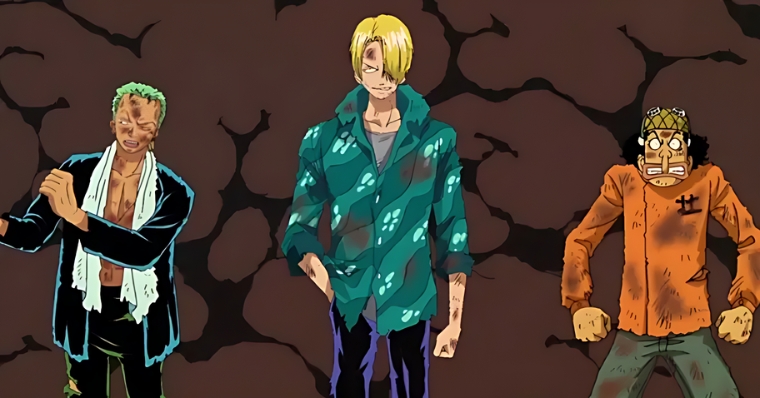
One Piece: Clockwork Island Adventure (2001)
Get ready because we're sailing back in time to one of the earlier gems of the One Piece franchise—the unforgettable "Clockwork Island Adventure." We're talking about the good ol' days when the Straw Hat crew only had five mainstays: Luffy, Zoro, Sanji, Nami, and Usopp. Although it's a compact lineup, the dynamic quintet guarantees a boatload of laughs and fist-pumping action, especially if you're a sucker for the anime's early brawls. You know how these movies go. One moment, the crew's chilling. The next, their beloved Going Merry is swiped from under their noses! Enter the Thief Brothers, a dynamic duo as shady as they come but just the allies the Straw Hats need to chase down their stolen ship. Where do they end up? On the mysterious, gear-ridden Clockwork Island, ruled by none other than the nefarious Bear King who, let's just say, takes a special liking to Nami. There's a quaint charm to this older film, manifested through its throwback art style—cruder and more exaggerated than One Piece's modern sleek lines . It's an intriguing look back at how far Eiichiro Oda's artistry has come. The film's production team also had more creative leeway, as evidenced by some truly breathtaking panoramic shots that made me lean in and say, "Dang, that's impressive!" The narrative here doesn't dilly-dally. The Straw Hats and their sketchy new friends are quickly thrown into the fray with the Trump Pirates, the island's bad guys. Despite the rush, the writers still manage to sprinkle in intrigue by giving us the Thief Brothers' cryptic motives and a sentimental music box that holds the key to someone's past. Your usual One Piece gimmicks? Maybe, but well executed. Bear King and his goons offer us an ensemble of cookie-cutter evildoers. They even conveniently set the stage for Straw Hat one-on-one showdowns. Yet there's a layer of depth, especially with Pin Joker, who's nursing an old grudge against Zoro. It's like a nostalgic nod to Zoro's pirate-hunting days. So, while they might seem like your typical villains, there's enough spice to keep you invested. The film's emotional core lies in the relationship between the Thief Brothers, particularly young Akisu. A brat at first glance, he undergoes a compelling transformation as he interacts with the Straw Hats. Drawing from his own experiences, Luffy serves up a reality check, encouraging Akisu to stand tall. It's not groundbreaking but resonates—a testament to One Piece's enduring thematic depth. Toward the end, things get predictably chaotic in the best way possible. Our heroes, disarmed and in dire straits, make their last stand against the Trump Pirates. The action sequences are fun, though some matchups wrap up too quickly, leaving you wanting more. Luffy's battle with Bear King isn't a spectacle, but it gets the job done, culminating in a pivotal moment that basically annihilates the island, the pirates, and almost everything else. But hey, it's One Piece; thanks to some conveniently deployed parachutes, everyone lands safely. "Clockwork Island Adventure" might not be a monumental chapter in the One Piece saga, but it's a thoroughly enjoyable ride. You can argue that the plotline and character arcs could be meatier, but an undeniable nostalgic allure makes the film worth the watch. Whether you're a long-time fan or new to the franchise, this film is a savory slice of what makes One Piece a treasure in the world of anime.
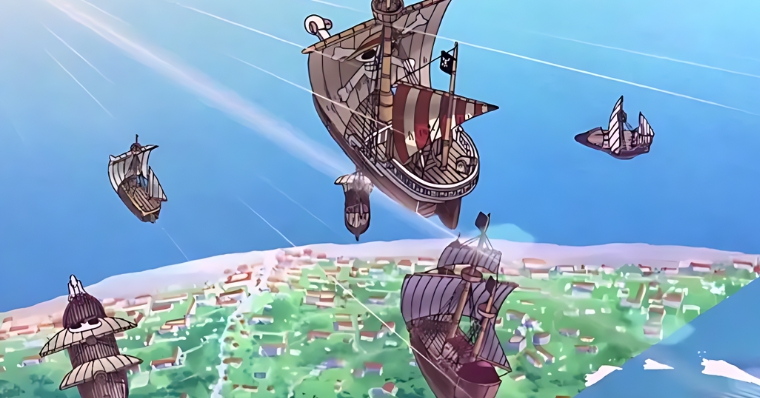
One Piece The Movie: Dead End no Bōken (2003)
"One Piece The Movie: Dead End no Bōken (2003)"—also known as "One Piece: Dead End Adventure"—is more than just another cinematic entry into the expansive One Piece universe. It's an exhilarating pirate saga that digs into the existential crisis of financial desperation. It pushes Monkey D. Luffy and his band of Straw Hat Pirates into the dangerous waters of an underground race for treasure. This is a battle against time and an assortment of lethal competitors, one of whom is Gasparde—an ex-Marine with a penchant for piracy. What sets this film apart from the others in the One Piece collection is its creative deviation from the standard One Piece formula. While it retains the quintessential components of what makes One Piece, well, One Piece, the film throws in a spicy twist—the concept of race. This notion of a high-stakes, cutthroat pirate competition brings a unique spin to the storyline, probably explaining why audiences found it riveting despite its somewhat predictable ending. Let's delve into the film's exclusive characters, starting with the main antagonist, Captain Gasparde. The man's essentially a villainous prodigy—a former Marine who broke bad and turned to piracy. His backstory is intriguing because it contrasts with the stereotypical pirate villain. Gasparde is a man torn between two worlds, an embodiment of both discipline and chaos. His transformation from a Marine to a pirate ringleader isn't just a career change; it's a shift in ideology—from a man of law to a man above the law. His persona offers a gritty yet captivating character depth that engages the audience, much like the compelling backstories of Zephyr and Vergo in the One Piece universe. Equally captivating is Shuraiya Bascud, the self-proclaimed 'Pirate Executioner.' Introduced as a tough, almost standoffish character, Bascud becomes an intricate part of the narrative as he joins forces with Luffy. His mission is personal, motivated by a burning desire to avenge a childhood scarred by Gasparde's cruelty. This deeper layer to his character is revealed seamlessly, transforming him from a mere 'cool dude' to a vengeful, emotionally complex individual with a vendetta. And then there's Anaguma, the film's young, exclusive character who serves as Gasparde's underling. Initially presented as a somewhat forlorn figure just trying to make ends meet, Anaguma's story blossoms as it's entwined with Bascud's narrative, eventually culminating in a heartwarming family reunion, no less. The twist that she's actually Shuraiya's long-lost sister is executed in a manner that feels organic, surprising even the most skeptical of viewers. The movie cleverly orchestrates introducing these characters around a central event—the enigmatic Dead End Race. This underground, perilous competition is where our protagonists find themselves in a rather comical yet high-stakes battle royale against other pirate crews. The Straw Hats navigate the chaos like pros, blending humor, courage, and daredevil antics in classic One Piece fashion. But, of course, the nefarious Gasparde also has his fingers in this pirate pie. Unbeknownst to the participants, he's in cahoots with the race organizer, adding an extra layer of intrigue and deception to the narrative. The race, it turns out, is not just a treasure hunt but a trap leading straight into a Marine fortress. Gasparde's treacherous manipulation of the event transforms it into an existential battlefield, resulting in a showdown brimming with suspense and emotion. While it's true that the climax of the film does parallel the iconic battle between Luffy and Crocodile in the main series, the energy and tension make it stand as a thrilling spectacle on its own. The fight scenes are electrifying, fueled by Gasparde's wicked trickery and Luffy's relentless spirit. From the brilliant voice acting to the snappy dialogue, the face-off is the perfect crescendo to this nautical escapade. To wrap it up, "One Piece: Dead End Adventure" may not be an Oda-supervised masterpiece, but it's an intriguing, action-packed prelude to the One Piece films that would follow. While the film does have some minor flaws, like not perfectly weaving together the race and the villain-centric plots, it delivers a compelling and entertaining narrative that stands strong in its own right. So, if you're in the mood for a pirate adventure with a dash of the unexpected, this film won't just meet your expectations—it'll exceed them.
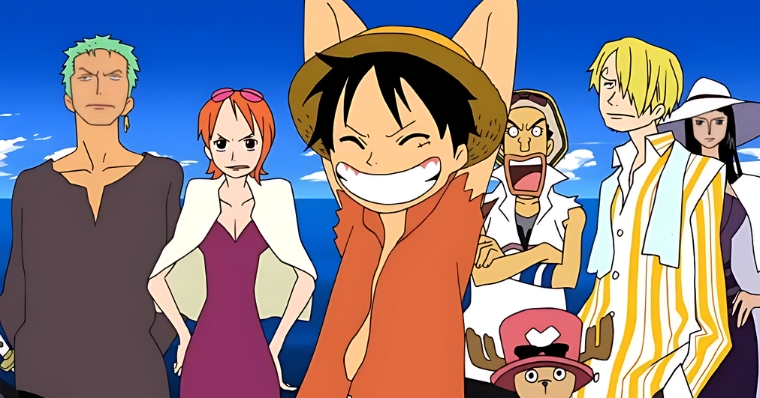
One Piece: Baron Omatsuri and the Secret Island (2005)
Let's pull up the anchor and set sail into what might be one of the most unusual entries in the One Piece filmography: "Baron Omatsuri and the Secret Island." Right from the start, the Straw Hat Pirates receive this compelling invitation to Omatsuri Island—a supposed island resort where a weary traveler might find solace from the treacherous seas. They don't know that the island's enigmatic Baron has, well, an "unorthodox" concept of hospitality. Eager to demonstrate that he and his crew are the epitome of pirate-dom, Luffy accepts the Baron's wild challenges without a second thought. But is the vacation promise too good to be true? A core facet that elevates this film is its direction by Mamoru Hosoda, renowned for works like "Belle," "The Girl Who Leapt Through Time," and "The Boy and the Beast." His unique lens doesn't just deliver jaw-dropping visuals, but it also douses the One Piece universe with a slightly darker and moodier tone. The film was the sixth animated feature in the One Piece lineup, and it held its own at the box office, competing with films like "Lorelei" and "Shark Tale" upon release. Far from being just a side story, it takes the viewer on a rollercoaster of moods and settings that tests the Straw Hat crew's camaraderie in entirely unexpected ways. Once the Straw Hats drop anchor at Omatsuri Island, it quickly becomes apparent that they've been led into a bizarro game show rife with perplexing challenges designed by the Baron himself. Luffy is enthralled by the notion of proving his crew's mettle, but not everyone is on board with the Baron's twisted concept of fun. And then, members of the crew begin to disappear mysteriously. Chance encounters with a ragtag pirate family and a once-mighty pirate captain start to untangle Omatsuri Island's enigmas. Among them is a peculiar revelation about the island's mystical flower—the Lily Carnation—that has historian Robin intrigued. Whether you love it or are on the fence, this film's tone and aesthetics make it unforgettable. Clocking in at just under 90 minutes, the movie captures your attention with its distinct art style, courtesy of Hosoda, while maintaining a balance between light-hearted shenanigans and moments of palpable tension. The film's first half could be described as 'laid-back,' akin to an 'anime filler arc.' The Straw Hat crew explores the resort-ish setting, participating in seemingly inconsequential activities. This casual setup is a foil for the unsettling, darker twists that eventually unfold. In an intriguing psychological play, Baron Omatsuri is set on driving wedges between the crew members. The cracks start to show when Nami gets frustrated with Usopp while Zoro and Sanji maintain their classic love-hate relationship. Interestingly, this complex dynamic adds a rich layer to the film but doesn't get a full resolution, leaving us with more questions than answers. The darkness peaks when we discover that the Baron and his crew are essentially the animated corpses of pirates who met their tragic end in a shipwreck. This revelation and other gruesome and horror-inspired elements elevate the movie from a One Piece story to something eerily transcendent. The movie's final act delivers high-voltage drama, brilliantly executed voice acting, and a haunting score. But what sets it apart is the raw emotional turmoil that the Straw Hat crew endures. This film defies One Piece norms, bringing heavy psychological elements that could either enthrall or alienate fans. Its unorthodox approach to character dynamics and the eerie finale leaves us pondering, long after the credits roll, about the true nature of friendship, loyalty, and the lengths one would go to protect it. This movie is an enigma wrapped in a riddle, delivered on a pirate ship. It's intense, intriguing, and not your everyday One Piece tale—precisely why it's so compelling. So, if you're in the mood for a One Piece story that veers off the beaten path, "Baron Omatsuri and the Secret Island" could be your next watch. Just be prepared for a journey as unpredictable as the Grand Line.
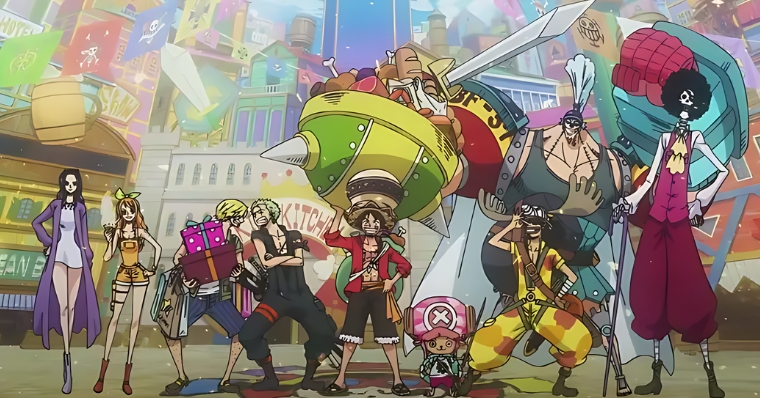
One Piece: Stampede (2019)
I remember hearing about One Piece: Stampede and thinking, "Is this a big deal?" Well, it turns out it's a massive deal! We're talking about a flick that hit the big screens to celebrate two decades of the One Piece anime. Two decades, people! If you think this is just some run-of-the-mill filler episode stretched into movie-length, let me stop you right there. The film dives headfirst into a Pirate Festival—no ordinary shindig, mind you. It's the grand stage where some of the most notorious pirates come together, all hell-bent on finding a treasure once possessed by the legend, Gol D. Roger. But here's the twist: The festival is merely a smokescreen, a ruse orchestrated by one of the most sinister criminals in history. So, yeah, it's not your typical summer fairground affair. While it's chock-full of special appearances and nods to past One Piece episodes, the narrative takes a backseat. If you're a stickler for a concrete storyline, this might rub you the wrong way. However, if you're like me and love catching unexpected cameos like Easter eggs, you'll probably be too giddy to care. So, what's the primary allure of Stampede? Well, its creator, Eiichiro Oda, gave the green light for the film's groundbreaking concept: A chaotic medley of fan-favorite characters thrown into one explosive cocktail of a showdown. Think of it as a
Marvel Cinematic Universe ensemble but for the One Piece world. It's basically a who's who of the pirate realm, from supernovas to admirals, all scrapping over the ultimate treasure. Let's zoom in on the film's baddie, Douglas Bullet, the "Demon Heir," and a former member of Gol D. Roger's crew. His sole mission is to establish his supremacy in brute strength. He's the kind of villain who speaks softly but carries a big, menacing stick. The only downfall? His motivations aren't deeply explored in the movie but are instead mentioned in some external texts. So, yeah, if you dig psychology with your fisticuffs, you might be left wanting. The movie also packs a punch with its star-studded lineup of battles. You'll witness gravity-defying leaps and spine-chilling clashes featuring Conqueror's Haki. And let's not overlook the heartfelt moments—especially with Usopp, who steals the emotional limelight, reminding us why he's an integral part of the Straw Hat crew. Then, of course, we've got the giant CGI showdown. It's colossal, but if I'm being honest, it could be seen as a little out of sync with the film's otherwise sleek animation. And speaking of colossal, the Marine Buster Call shows up, creating another layer of tension and complexity. It's like the filmmakers wanted to blend an action bonanza with a spy thriller. At the end of the day, One Piece: Stampede is a celebration, not just of one or two characters, but of an entire universe that's been captivating audiences for 20 years. So, is it perfect? Maybe not. But it sure is a grand spectacle that gives us both poignant and electrifying moments to cherish. If the One Piece tide hasn't yet swept you away, now's a good time to dive in.
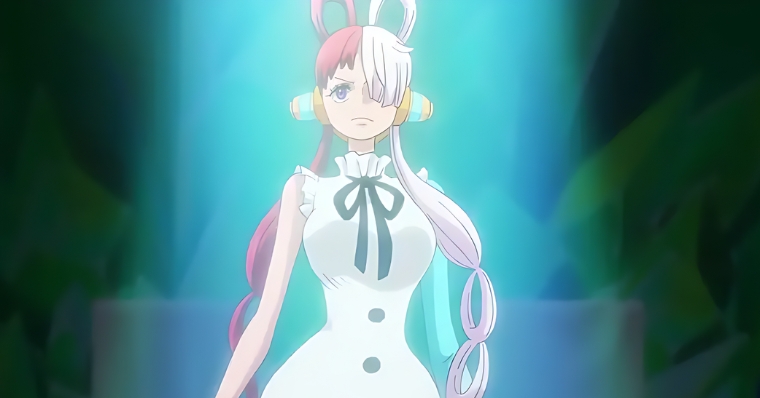
One Piece Film: Red (2022)
One Piece has never shied away from grand battles and spectacular showdowns. Yet, "One Piece Film: Red" takes the franchise into unexpected emotional depths, revealing a side of the characters we've rarely seen before. The story introduces Uta, a diva with a mysterious past, who is revealed to be the estranged daughter of Shanks, one of the Yonko and Luffy's mentors. A demonic force known as the "Tot Musica" threatens to consume Uta and everything she holds dear, setting the stage for a thrilling quest to save her. The film has its share of breathtaking action sequences and comedic interludes, which are expected from a One Piece film. However, it's in the emotional arcs where the movie truly shines. While Shanks admits to Uta that he was an absent father and still loves her despite the mistakes she's made, Luffy takes center stage for the emotional climax. Unlike most One Piece movies or even episodes where the resolution is generally reached through a spectacular final blow, Film: Red opts for an entirely different route. Luffy, adamant about not fighting Uta but understanding the gravity of the situation, reaches out to her emotionally rather than physically. This is beautifully symbolized when Luffy, forgoing his typical combat moves, stretches his hand out to reach Uta, consumed by the Tot Musica demon. Echoing the theme of friendship and the belief in inherent goodness, Luffy's hand penetrates the monstrous form, finding Uta within. The following dialogue isn't just exposition; it's a heart-wrenching confrontation between two childhood friends who have lost their way. Luffy doesn't mince words. He calls Uta out for her misguided actions but also reassures her that mistakes don't define a person; what one does to make amends truly counts. All this time, the 'Demon King' within the Tot Musica is disintegrating, almost as if it can't withstand the purity of their rekindled friendship. Shanks, watching his daughter and his protégé, finally understands that he has underestimated the new generation's emotional resilience and moral compass. And just like that, the Tot Musica, the dream world, the chaos all starts to dissolve. Now free from the demonic influence, Uta collapses, but Shanks catches her in a poignant moment that brings the story full circle. The film concludes not with a glorious battle won but with personal demons conquered and relationships mended. Uta decides to take a hiatus from her career as a diva, opting instead to join her father and the Red-Haired Pirates, embracing her roots while looking to redefine herself. For a franchise that often relies on epic fights and explosive climaxes, One Piece Film: Red stands out for its emotional depth and intricate character development. It's a testament to Eiichiro Oda's storytelling skills that even in a side story, One Piece can tug at our heartstrings and make us reflect on our own personal battles. In many ways, Film: Red subverts the typical shonen anime tropes, not by neglecting them but by transcending them. It shows us that sometimes, the most significant battles are the ones we fight within ourselves and that the real treasure is not gold or fame but the relationships we build and sustain.

One Piece Film: Gold (2016)
"One Piece Film: Gold" transports us to Gran Tesoro, a unique, autonomous realm that operates beyond the grasp of the World Government. It's a playground for pirates, marines, and high-rollers, presenting itself as a neutral sanctuary. Enter the Straw Hat Pirates, whose arrival sets off a chain reaction of events orchestrated by the island's enigmatic ruler, Gild Tesoro. His ambitions might just tip the scales of power in the New World, creating ripples that can't be ignored. Despite occasionally leaning into the formulaic, "Gold" dazzles audiences with a top-tier antagonist, an intricately woven plot, and eye-popping battle sequences. The film kicks off with a visual and auditory treat—a musical spectacle, "Gold & Jive ~ Silver Ocean," that perfectly sets the stage for the rest of the story. As if the audience needed a reminder of why they love this franchise, the opening seamlessly transitions into a clash featuring the Straw Hat Pirates, making every frame feel like art in motion. Gran Tesoro is an island-casino, a moving oceanic Vegas on steroids. But don't get too smitten. Beneath its glitzy surface, the island's allure has a dark underbelly. Our beloved Straw Hats get a taste of this when they enjoy a bit of gambling fun, only to find themselves ensnared in Gild Tesoro's trap. The stakes couldn't be higher: they need to settle their debts or risk losing one of their own. One thing the film doesn't shy away from is intricate storylines. We see Carina, an old friend of Nami's, make an appearance. While their shared backstory is hinted at, it can seem incomplete unless you've dived into "Heart of Gold," a companion anime special. Similarly, the villain Tesoro has a complex past, rich in its portrayal but easy to miss. You need to keep a keen eye to piece together his journey—from a slave to an individual whose mantra is that 'money is power.' As the Straw Hats enact their heist plan, it becomes a mind game of who's outsmarting whom. The film walks a fine line, making you wonder if everything is too convenient or intricately planned. When the Golden Tesoro's lavish festivities get sabotaged, we're plunged into the final showdown, and the energy in the room palpably shifts. The film also attempts to incorporate fan-favorite characters like Lucci and Sabo. But blink, and you might miss their cameo. These brief appearances feel more like a tease than a bonus in a movie that juggles multiple subplots. The final battle is an eye-catcher, but it treads familiar ground. Gild Tesoro's transformation into a golden behemoth is captivating, but it boils down to a mano-a-mano showdown. Tesoro's twisted ethos gets a reality check when his minions flee, symbolizing the crumbling of his golden empire. The battle crescendos with Luffy's trademark Gomu Gomu Leo Rex Bazooka, collapsing Tesoro's gilded dreams in an explosion of spectacle and emotion. While "Gold" may not have the narrative finesse of "Z" or the simplicity of "Strong World," it holds its own in the One Piece cinematic universe. Its ambition sometimes overshadows its execution, but that doesn't make it any less engaging. It aims to tackle heavy themes and complex characters, even if it occasionally gets bogged down in its own intricacies. However, the film's stellar animation and voice acting remain constant. It might not be the magnum opus of One Piece films, but it certainly is a worthwhile addition to the treasure trove.
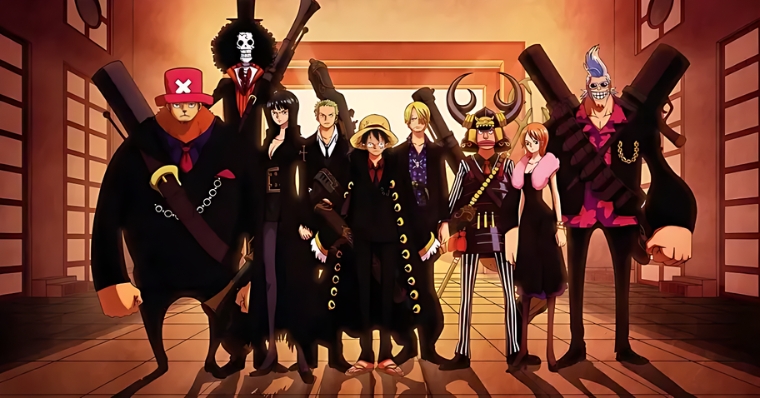
One Piece Film: Strong World (2009)
There's something undeniably intriguing when a series creator, who otherwise keeps a curated distance from cinematic adaptations, rolls up their sleeves and dives into the screenplay. Enter "One Piece Film: Strong World," the 10th installment of the One Piece film series, which finds its roots in the creative genius of Eiichiro Oda himself. Talk about a full-circle moment in One Piece history, right? So, what's the setup? As the Straw Hat Pirates navigate the treacherous seas, they learn that East Blue, their hometown region, is under siege by a criminal mastermind. Resolute to put things right, the crew embarks on a journey back home. But destiny has a different course charted for them. They run into the notorious Shiki, an alumnus of the legendary Rock Pirates, who doesn't waste time kidnapping Nami for her superior navigational talents. Now, the squad finds themselves fighting for their friend and survival against an army of monstrous creatures on Shiki's private islands. But what sets "Strong World" apart from its predecessors? Eiichiro Oda took a hands-on role in the project, adding his signature touch to the screenplay and character designs. This active involvement not only galvanized the One Piece fanbase but also propelled the movie to a level of quality and authenticity not usually seen in anime adaptations. Despite the film's relatively straightforward premise, its narrative layers provide a richly textured and memorable story. The backstory: The journey to the big screen for "Strong World" wasn't a cakewalk. Initially slated for a Spring 2009 premiere, the release got delayed due to script complications. But all the behind-the-scenes drama proved worthwhile when the film finally hit the theatres on December 12, 2009. North American fans had to exercise more patience until Funimation scooped the rights and released it on November 19, 2013. To commemorate One Piece's 10th Anniversary, Oda did more than just supply character designs or greenlight plotlines, as was his custom in previous films. This time, the bigwigs at Toei Animation personally requested him to write the script. The movie takes its cues from the manga's timeline, nestling between the Thriller Bark Arc and the Sabaody Archipelago Arc. As an icing on the cake, Japan's first 1.5 million patrons received a special Volume 0 of the One Piece manga, which directly ties into the movie's narrative and offers a vintage look into the One Piece world 20 years prior. Diving into the review: I recently rewatched "Strong World," and there's a lot to unpack. This installment is different because Oda's involvement guarantees that every line, every frame, feels like it's woven into the very fabric of the One Piece universe. Contrast this to other anime movies, often maligned for their lack of narrative continuity, and you'll see why "Strong World" strikes a chord. However, it's not all smooth sailing. The storyline does venture into some unnecessary territories. For instance, an extended sequence showcasing Nami swimming, followed by an awkward dance routine featuring Shiki and his henchmen, felt more like filler than substance. It didn't contribute to the plot and rendered Shiki less fearsome than he could've been. But let's talk action and animation. Although it may not rival some of the latest anime movies in visual fireworks, "Strong World" was a feast for the eyes regarding fight sequences and intricate character detail. Whether it's Luffy sauntering towards Shiki with an air of untouchable coolness or Zoro and Sanji dispatching foes, the animation quality is nothing short of commendable. Voice acting, you ask? Stellar. I first watched "Strong World" around the time I was getting into the Punk Hazard arc in the manga, and hearing the Japanese cast—especially for characters like Brook and Franky—brought an added layer of enjoyment to my One Piece journey. While the film plays around with some intriguing dynamics, it doesn't revolutionize the genre. Despite his fascinating backstory, Shiki leans toward a run-of-the-mill villain more than a multifaceted character. However, it doesn't necessarily make the movie any less entertaining. In the grand scheme of things, "One Piece Film: Strong World" isn't an earth-shattering cinematic masterpiece, but what it does deliver is an authentic One Piece experience. It's a visual and emotional rollercoaster that entertains, engrosses, and, most importantly, feels true to its source material.
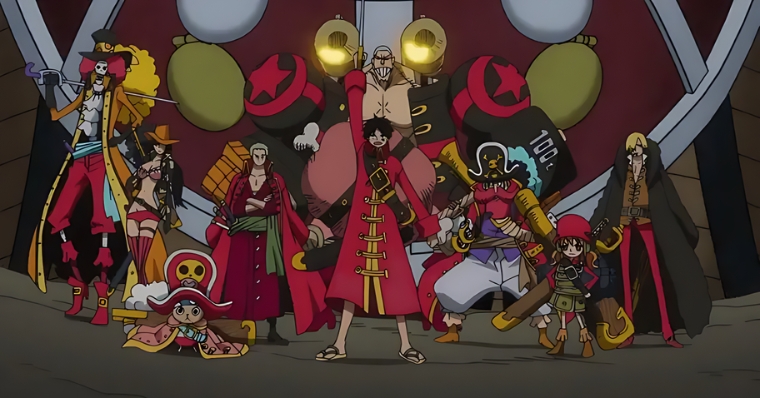
One Piece Film: Z (2012)
The sea gets its dosage of terror from time to time, thanks to Z, the most formidable general the Navy has ever seen. When you hear his name, even the rowdiest of pirates lose their bluster. Interestingly, Luffy and his band of merry pirates cross paths with this feared mariner, initially ignorant of his true identity as Z. Likewise, Z, unaware of their piratical profession, fails to recognize them for what they are. But here's where the narrative gets electrifying. After getting bested in a skirmish with Z, our heroes ignite a relentless chase to prevent him from wielding an apocalyptic weapon known as the Dyna Stone—a potent device that could literally shatter the world into pieces. "One Piece Film: Z" gives us an antagonist so compelling that he occasionally outshines even the regulars of the anime series. The pedigree of "One Piece Film: Z" is something worth noting. It is the 12th installment in the One Piece film universe, hitting screens on December 15, 2012. With a script by Osamu Suzuki, directorial expertise from Tatsuya Nagamine, and the watchful oversight of One Piece creator Eiichiro Oda, the film brilliantly captures the essence of its source material. Let's not forget Yasutaka Nakata, who crafted the mesmerizing theme song for this cinematic adventure. I've meant to jot down my thoughts on this One Piece movie for quite some time—think years, not months. And honestly, the delay gnaws at me, especially considering the unique attributes of this film. Unlike its predecessor, "Strong World," or its successor, "Film Gold," "Film: Z" doesn't fit snugly into the One Piece canonical universe. But don't misinterpret that; the storyline is extraordinarily executed, rising above the typical constraints of anime movies. If you're familiar with anime films based on series like Pokemon,
Naruto, or Bleach, you know they often serve as one-off storylines that introduce a formidable foe only to dismantle him by the end credits. Yet, "Film: Z" diverges in the best possible way. It's deeply rooted in the characterization of its villain, former Admiral Zephyr—now rebranded as "Z." From his very first scene, Z is portrayed as more than just another obstacle. He's a gargantuan force with a mechanical arm cannon that gives even the Hulk pause. And he's not just battling for the Dyna Stones; he's battling for an ideology, putting him in direct conflict with Admiral Kizaru, a character he once mentored. The film doesn't shy away from the melancholy, either. While we get the usual Straw Hat Pirates' cheerful antics and Z's underlings, Ain and Binz, add some quirky fun, the film maintains its focus on Z. His backstory, objectives, and complicated relationship with the Navy are artfully woven into the narrative, making him the true focal point of the film. Oh, and let's talk about Aokiji. This mysterious character steals scenes with an aura of enigma. He encounters the Straw Hats in some hot springs and unfurls a musing on the nature of dreams that proves to be surprisingly poignant. His observations deepen the ideological clashes in the film and contribute to its emotional heft. The film's tone is beautifully balanced between poignant storytelling and bursts of humor, all while steering clear of turning Z into some overhyped villain. Appearances from other iconic Marine figures like Kizaru, Akainu, Sengoku, and Garp add texture to the narrative without feeling gratuitous. To sum it up, One Piece Film: Z is a cinematic treat with layer upon layer of complexities. Whether it's the ideological face-offs, Z's tragic history that mirrors the darkness of characters like Batman and the Punisher, or even the lighter moments featuring random villagers aspiring to piracy, the film delivers an emotional and visual spectacle that still resonates years after its release. The potent combination of a spellbinding storyline and an evocative musical score firmly establishes it as a landmark anime film, elevating it above being just another shonen spin-off.











